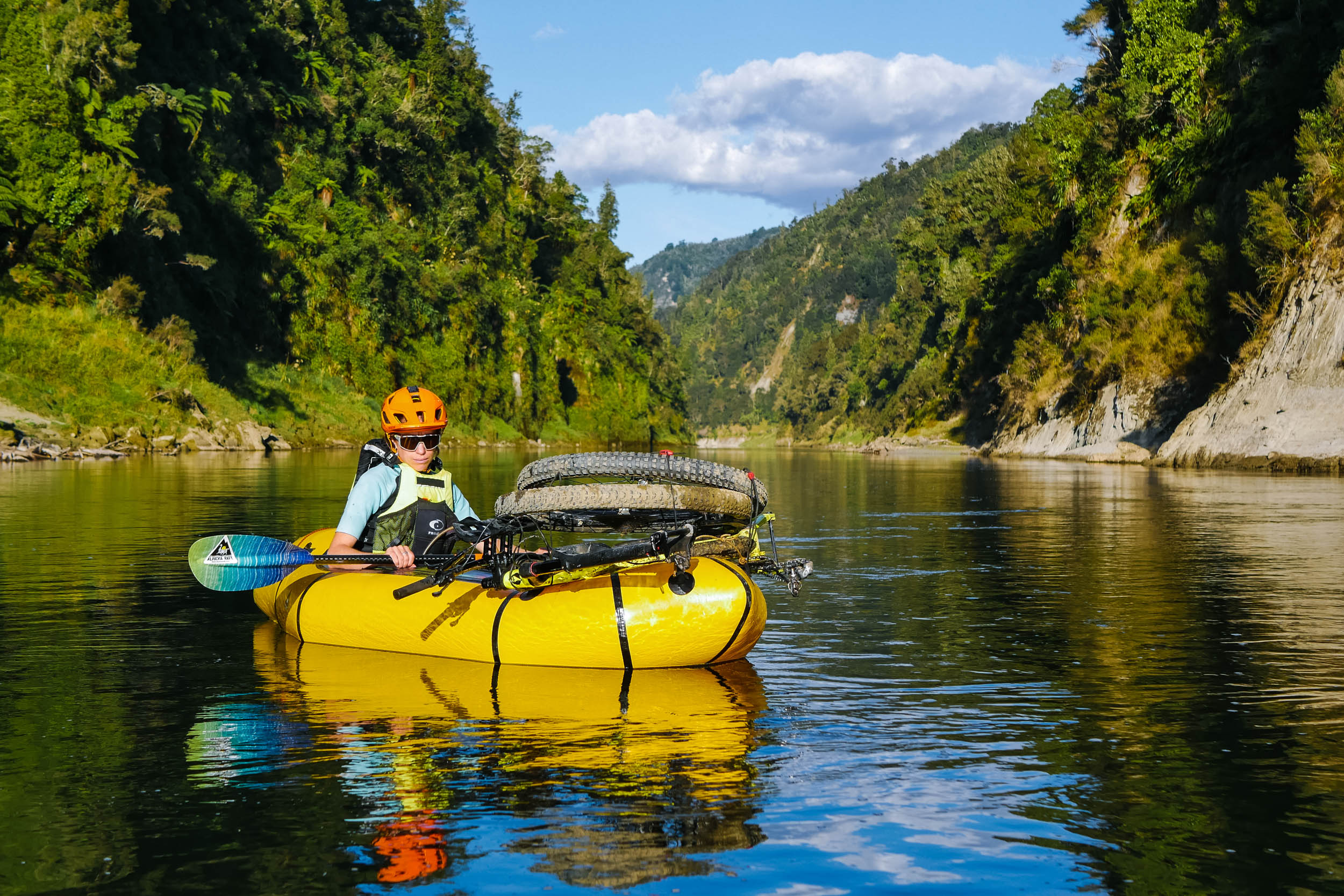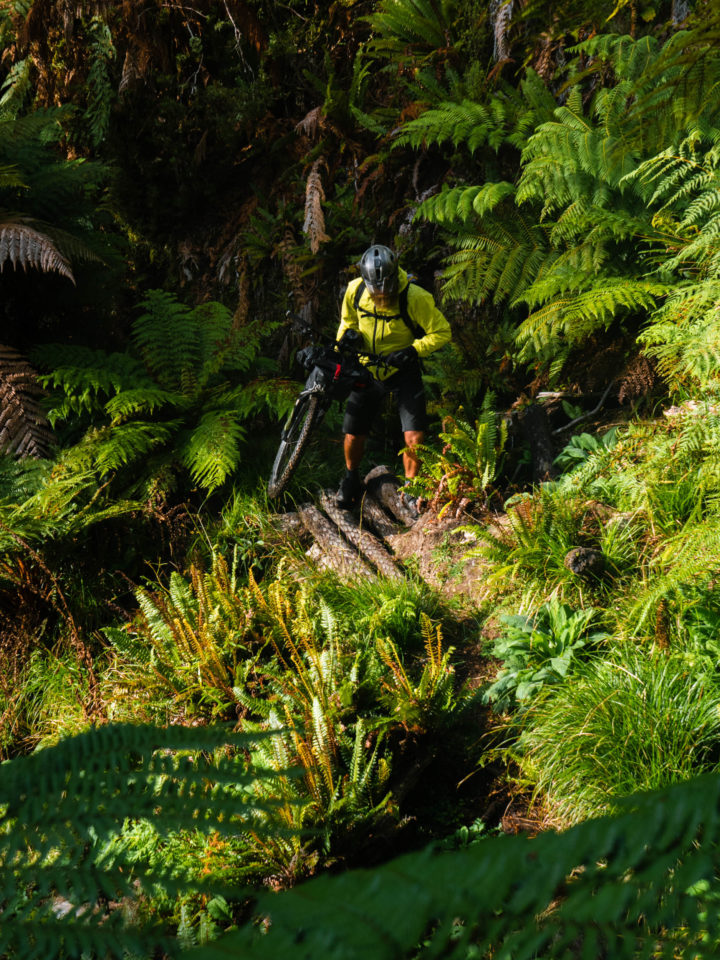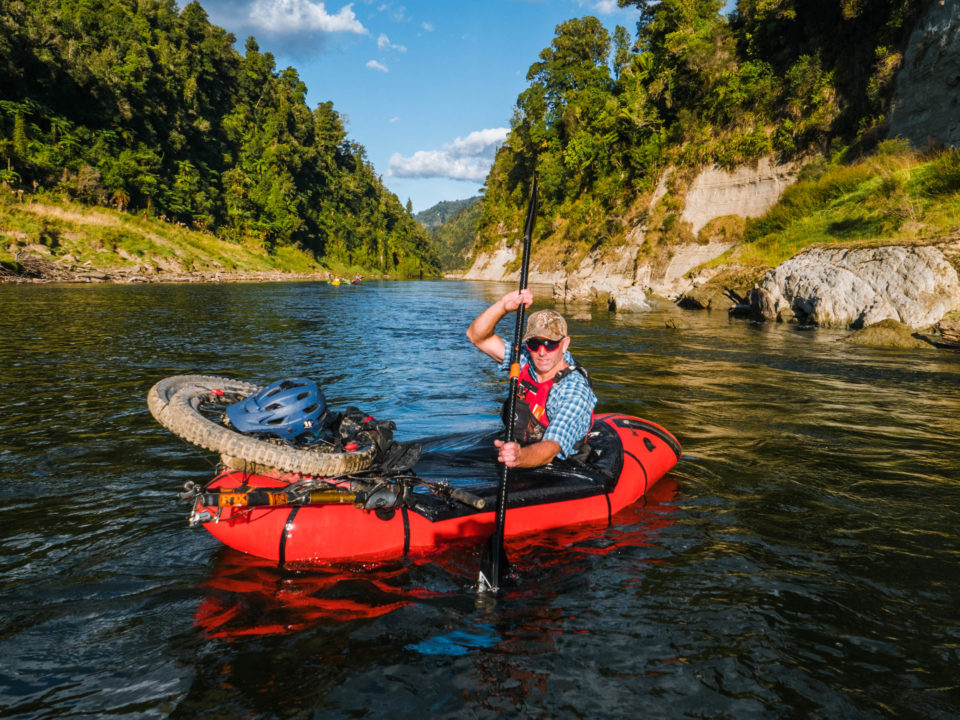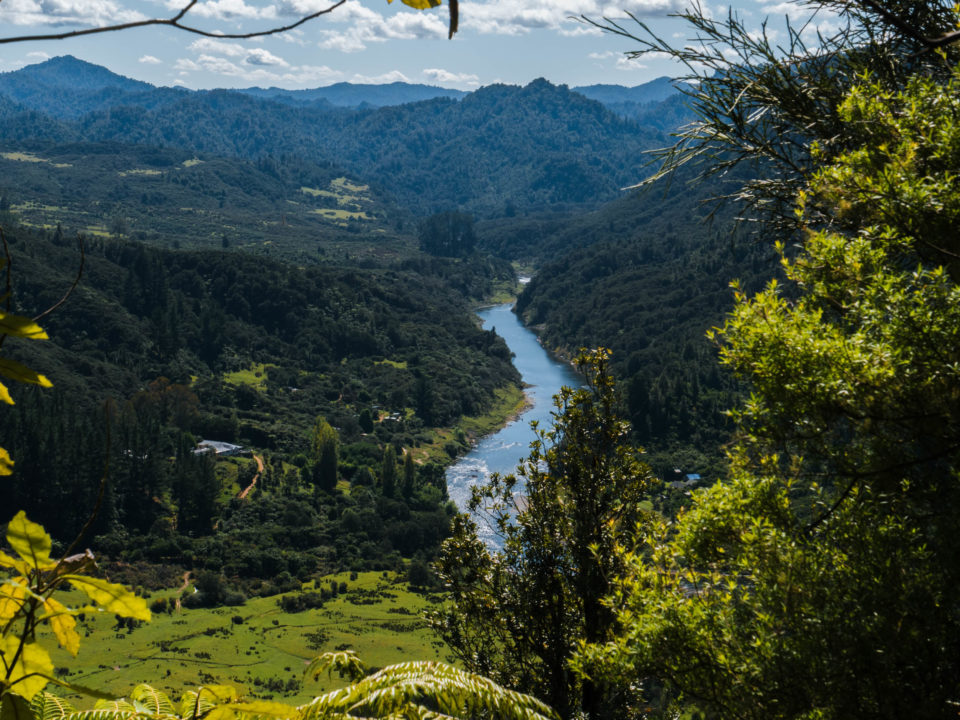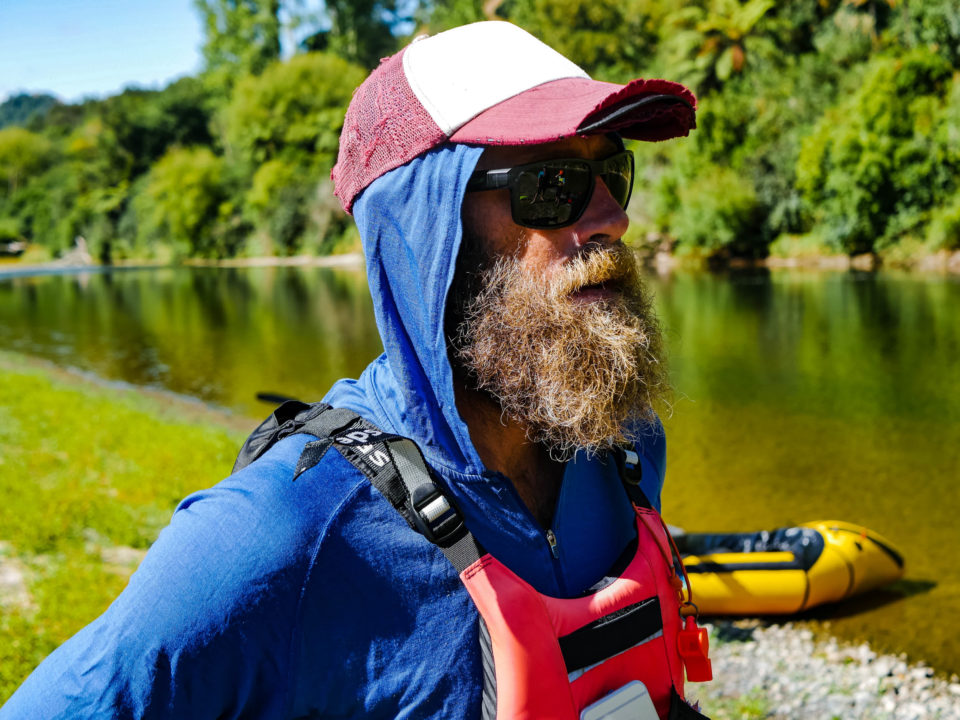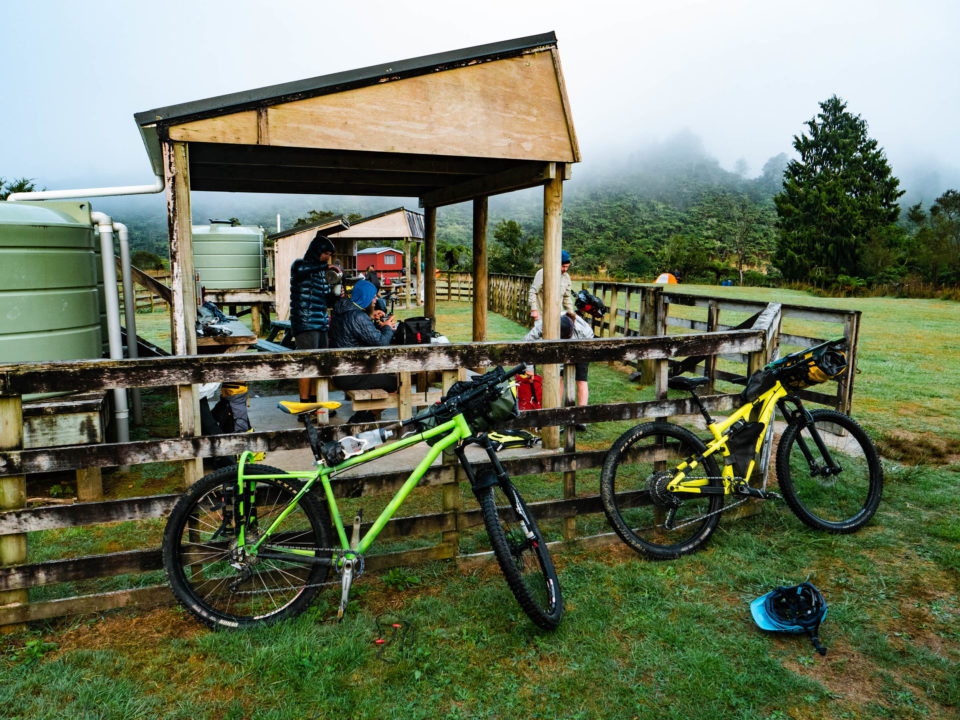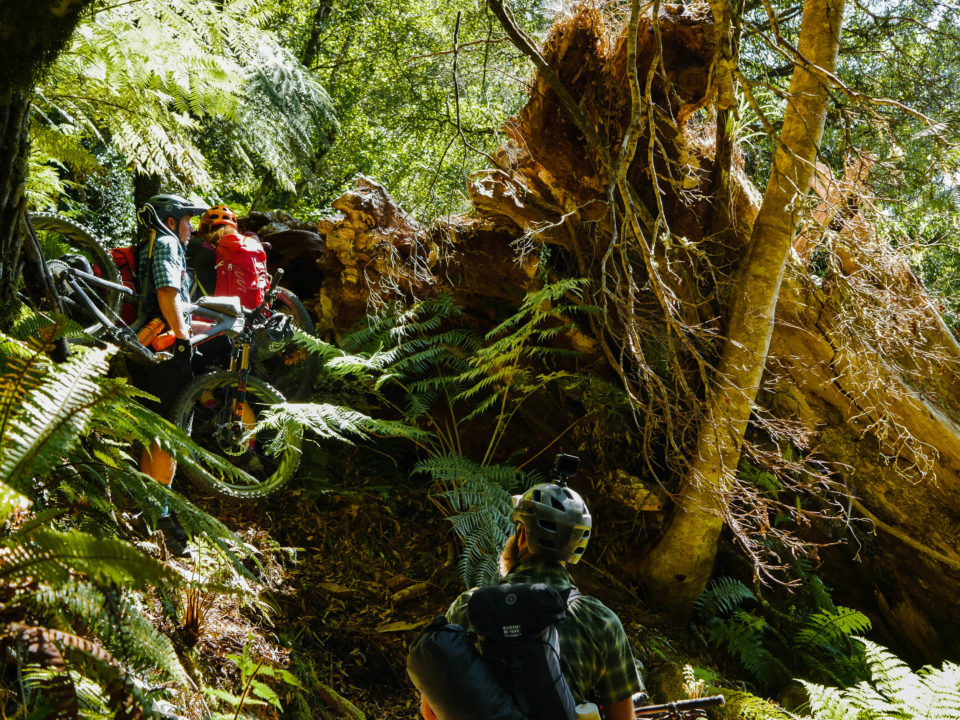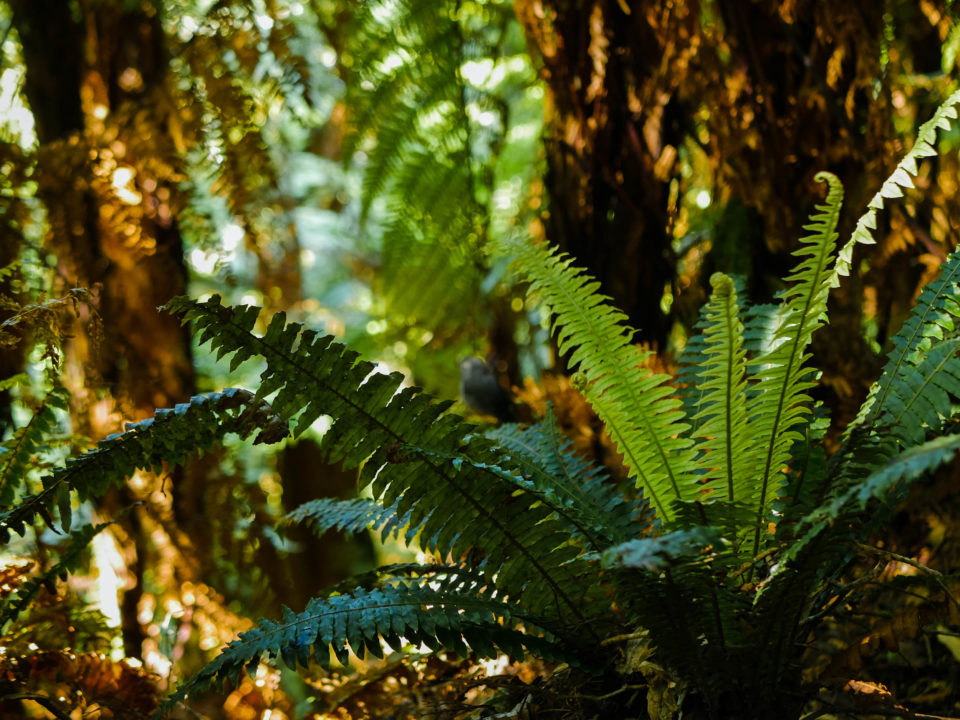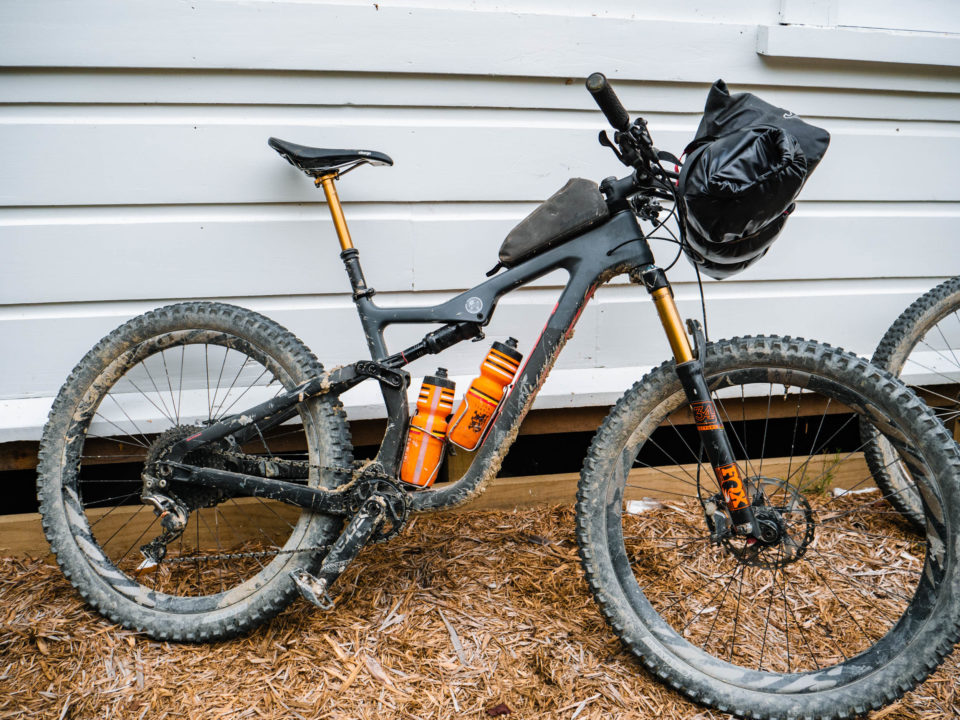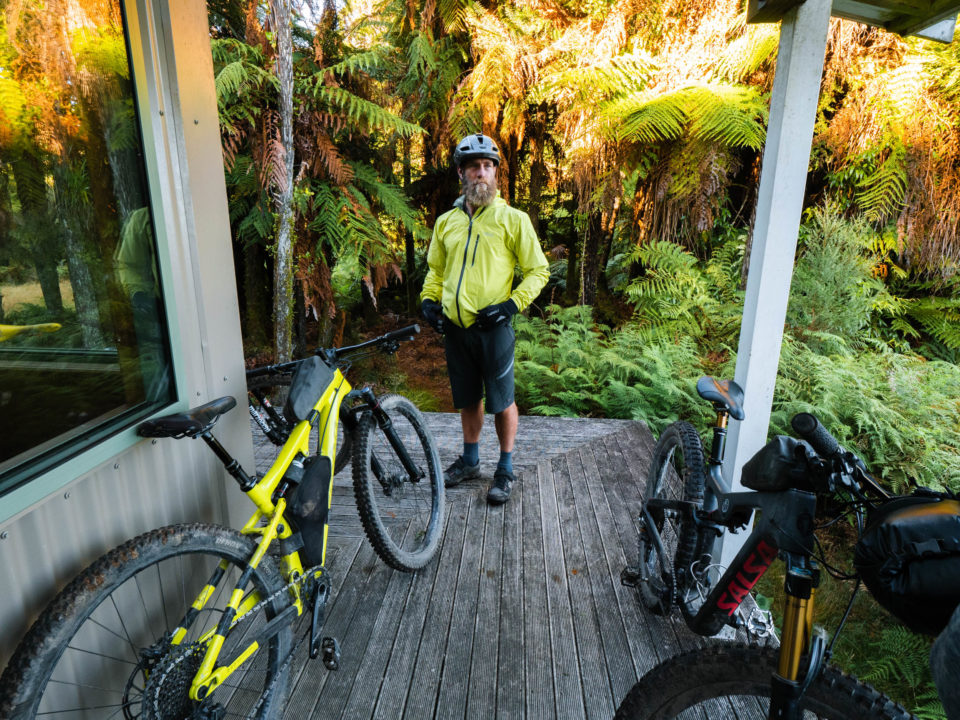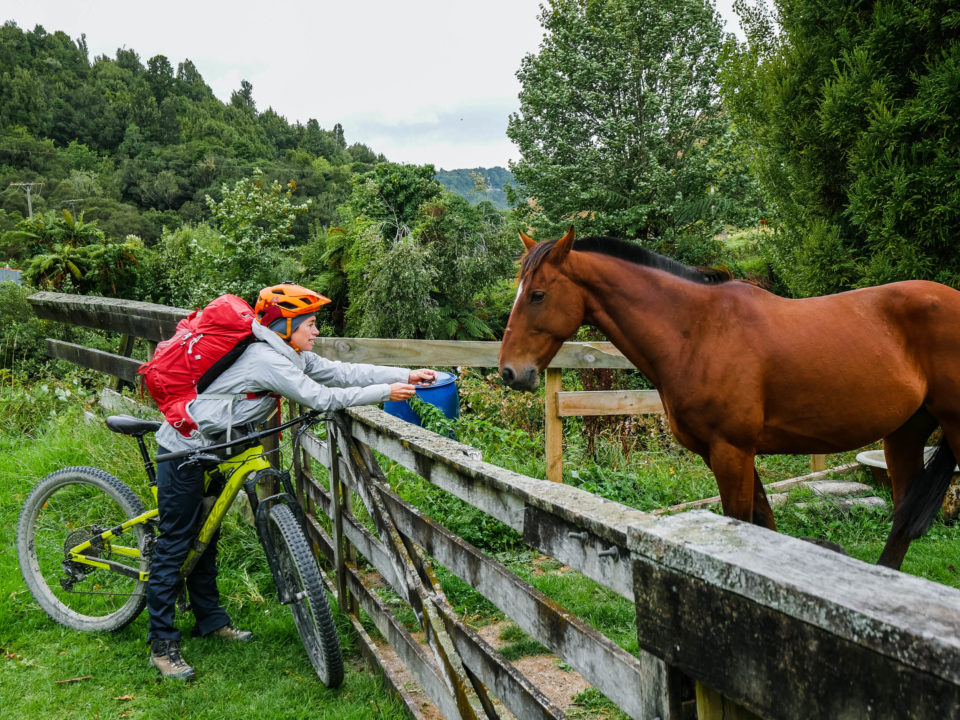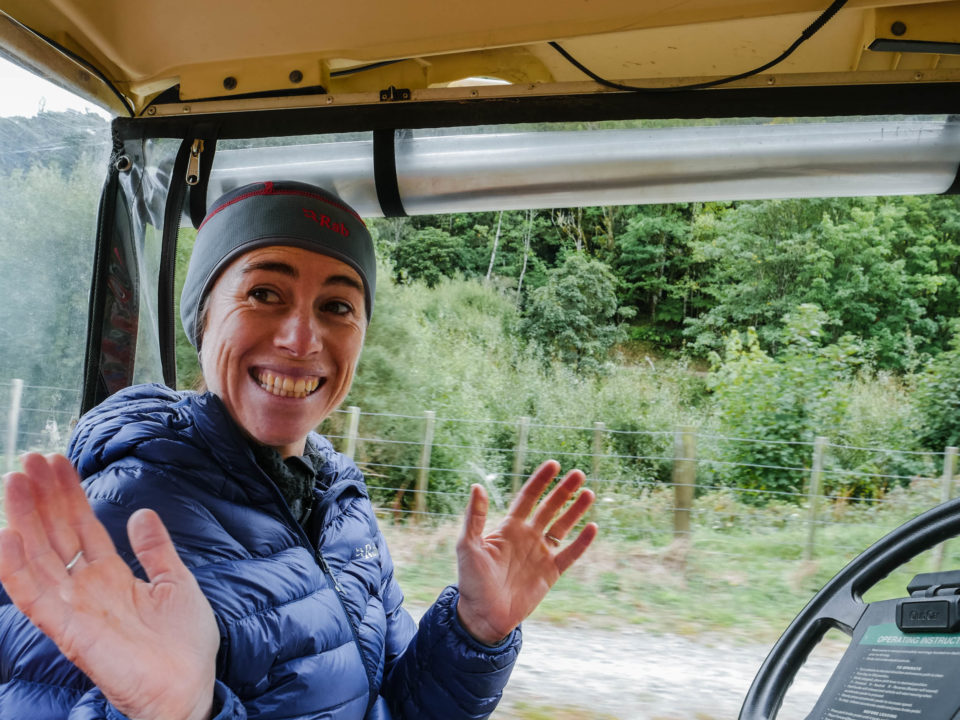Forgotten Highways (Film)
Share This
Forgotten Highways is a new short film that tells the story of a six-day journey along New Zealand’s Whanganui River, during which Deane Parker and his riding partners used bikes and boats to learn about the river’s rich history. Find the film, photos, and a story from the trip here…
Over the course of nearly a week, Deane Parker and his team used mountain bikes and packrafts to piece together a stunning loop that connected a variety of backcountry trails and tracks with one of New Zealand’s most significant rivers. Watch Forgotten Highways—his full 15-minute film chronicling the trip and offering a glimpse into the area’s history—below, then continue on for a written recap and a selection of images.
Words and photos by Deane Parker (@deaneparkernz)
The South Island of New Zealand’s topography is fairly straightforward: there’s a main divide, and rivers flow west to the Tasman Sea or east to the Pacific Ocean. The North Island is a bit more convoluted or disorientating. I’ve spent little time adventuring in the ‘other’ Island. Jackson Green inspired me with stories of a route of ancient river folklore and seldom ridden jungle singletrack. The Wanganui River is full of history and mythology from its early days as an artery for transport and commerce by the indigenous Maori iwi, or tribes, and then by paddle steamers up until the 1950s.
I’d read of the notorious reputation of crashes on the Bridge to Nowhere trail by riders on the length of the country brevet, Tour Aotearoa, which included a death. What I hadn’t heard of was a thin ribbon of a walking track from the river up and out to the west through steep jungle country, following a dry ridgeline, the Matemateonga track. Intrigued, we hatched a plan to undertake the route in March 2020.

We devised a plan to paddle the upper river in packrafts, carrying our mountain bikes until we reached the Bridge to Nowhere trail where we’d transform to bikers and ride, then paddle to the beginning of the Matemateonga track, and ditch our packrafting gear to have it ferried out by jet boat, allowing us to break our gear down for lightweight rigs to take on the predicted grade 4-5 hike-a-bike. And that’s not all! We would then ride to a quaint little tourist town for a well earned night at the pub, with a final day and an idea for some… “alternative” transportation.
We would be a team of four: Me, Muel, Rose, and Rose’s husband Jackson, who was new to the bikerafting thing but had provided the route and some intel from having ridden and canoed some parts. The other three of us had done a major bikerafting expedition in Kahurangi National Park 18 months prior and a smattering of other shorter trips. The route was achievable by using the packrafts to stay largely independent, with the exception of a food cache and cartage of our packrafting gear by the Bridge to Nowhere Lodge.
On 10th of March, we finally had the team together, and Rose and Jackson picked Muel and me up from the Rotorua airport after competing in Crankworx on their tandem downhill bike. A squashed drive loaded to the max followed en route to Taumaranui, the most upstream terminus of river travel on the Whanganui River.
A plan was made to camp next to the river, for an early start the next day. Arriving at a campsite in the dark before a big trip tends to be nerve wracking, and this was no exception. Doubts about forgotten gear, having enough food, and the inevitable tossing and turning of a sleep of anticipation set the tone.
The morning brought a low layer of inversion cloud, common in these river valleys, and my first look at this majestic river. As someone who is used to swiftly moving mountain rivers falling off the Southern Alps, to me the river seemed unremarkable and small. It struck me that a river of such stature—that was even recognised by the UN—sat here gently meandering past the campsite. Shortly after, though, canoeists appeared from tents and tour operators dropped others off to start their river journey. Meanwhile, we started the arduous task of rigging packrafts, stuffed full of gear, bikes on the bow. We were carrying provisions for the first three days.
It was quite the feeling of jubilation as we pushed off and started clocking up the kilometres, knowing we’d have a long day of paddling to reach the tiny settlement of Whakahoro for night one. Even with a lofty target, we wanted to soak in the atmosphere of the historical significance of the landmarks. We encountered very few rapids and the mini gorge had a feeling of remoteness. The sun shone hot and baked us as we paddled. We only pulled over to discover a Niu pole and a couple of quick food breaks but still ended up within sight of the Whakahoro settlement after nigh on eight hours.
Choosing to use the last light of day to rig the bikes up with packrafts, we bathed in a relaxed manner, appreciating a great day on the water discovering new country. Our accommodation was bunks in the old and school building now administered by the Department of Conservation (DoC).

The same inversion layer hung about on the morning of day two, when we’d have an even bigger goal than the day before. We’d need to ride 36 km of rough trail before transforming back to packrafts for a couple of hours of paddling to reach the Bridge to Nowhere Lodge and our waiting food cache for the next three days.
We started early into steep jungle country, slowly becoming accustomed to the oversized loads on full-suspension mountain bikes. The ancient papa geology (essentially compacted volcanic ash) is striking on this trail, forming massive bluffs and deep ravines are spectacular from a maintained trail, but I imagined must have been fraught with challenges for the early settlers who endeavoured to break in the land after having been offered sections of it post both World Wars.
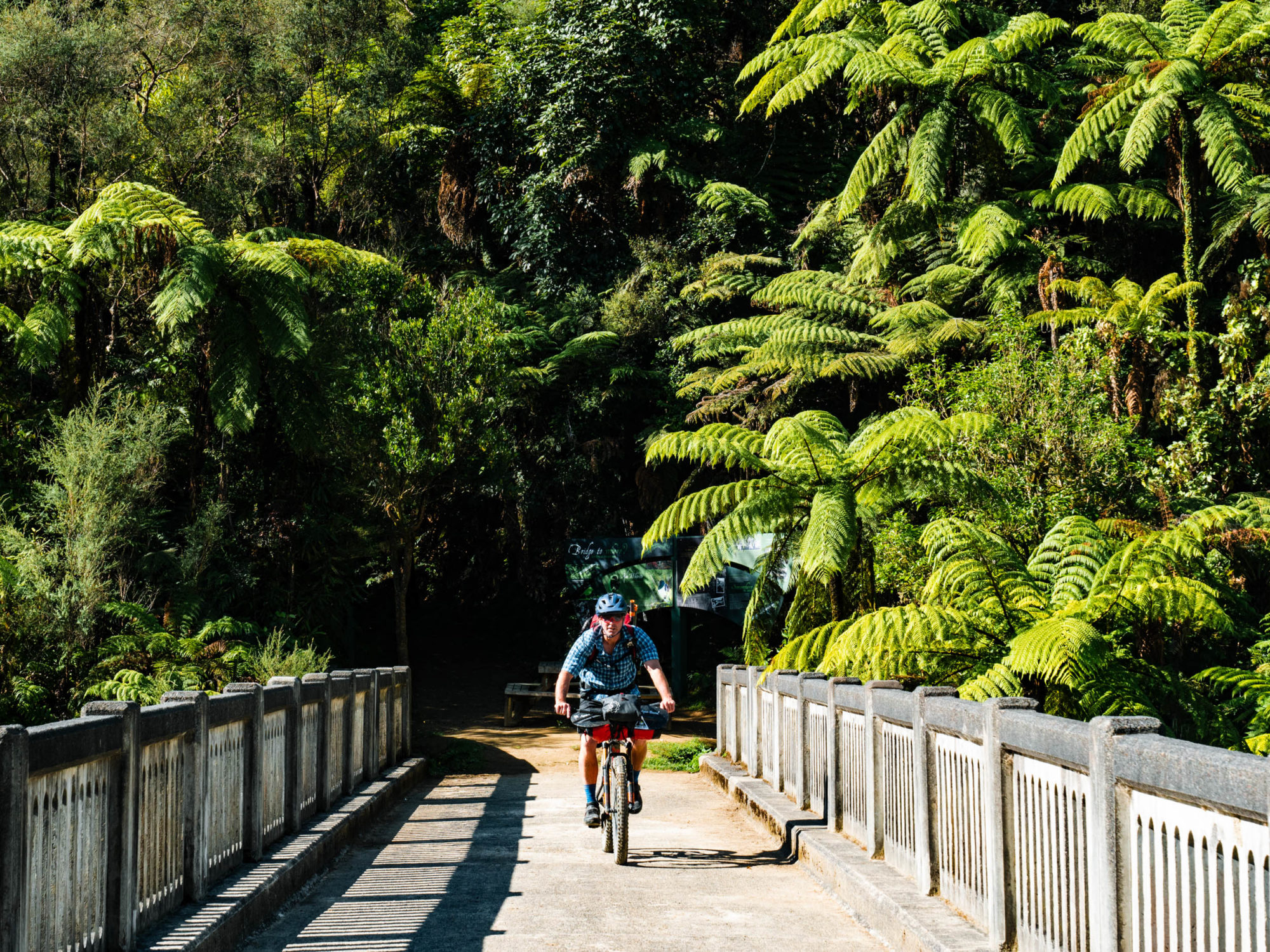
It was mid afternoon when we arrived at the famous Bridge to Nowhere. A construction project undertaken in 1934 to bring prosperity to the Mangapurua valley with the promise the bridge would allow better access. After the settlers left, the bridge lay dormant in the bush for decades before a plan was hatched to link the bridge as a bike trail to the river at Mangapurua Landing. We rode on to the Landing and rigged up the boats for an evening paddle as it was getting late. A bunch of older folk were leaving in a jet boat, as one of the passengers had fallen off the side of the track 20 metres down a bank out of sight from his companions. By the sounds of it, he was very lucky not to have sustained a serious injury. His story shines some light on the risks associated with beginner riders on powerful e-bikes taking on technical, remote trails.
The paddle was surreal, glassy with beautiful light. We relaxed in the moment and enjoyed the serenity. We paddled up to the lodge’s beach with the last light of the day, and after quickly derigging were overcome by the hospitality of Mandy, Joe, and Wayne at the comfortably rustic lodge. It really was an oasis. We were going to use the lodge as a launchpad for the most demanding sections to come.
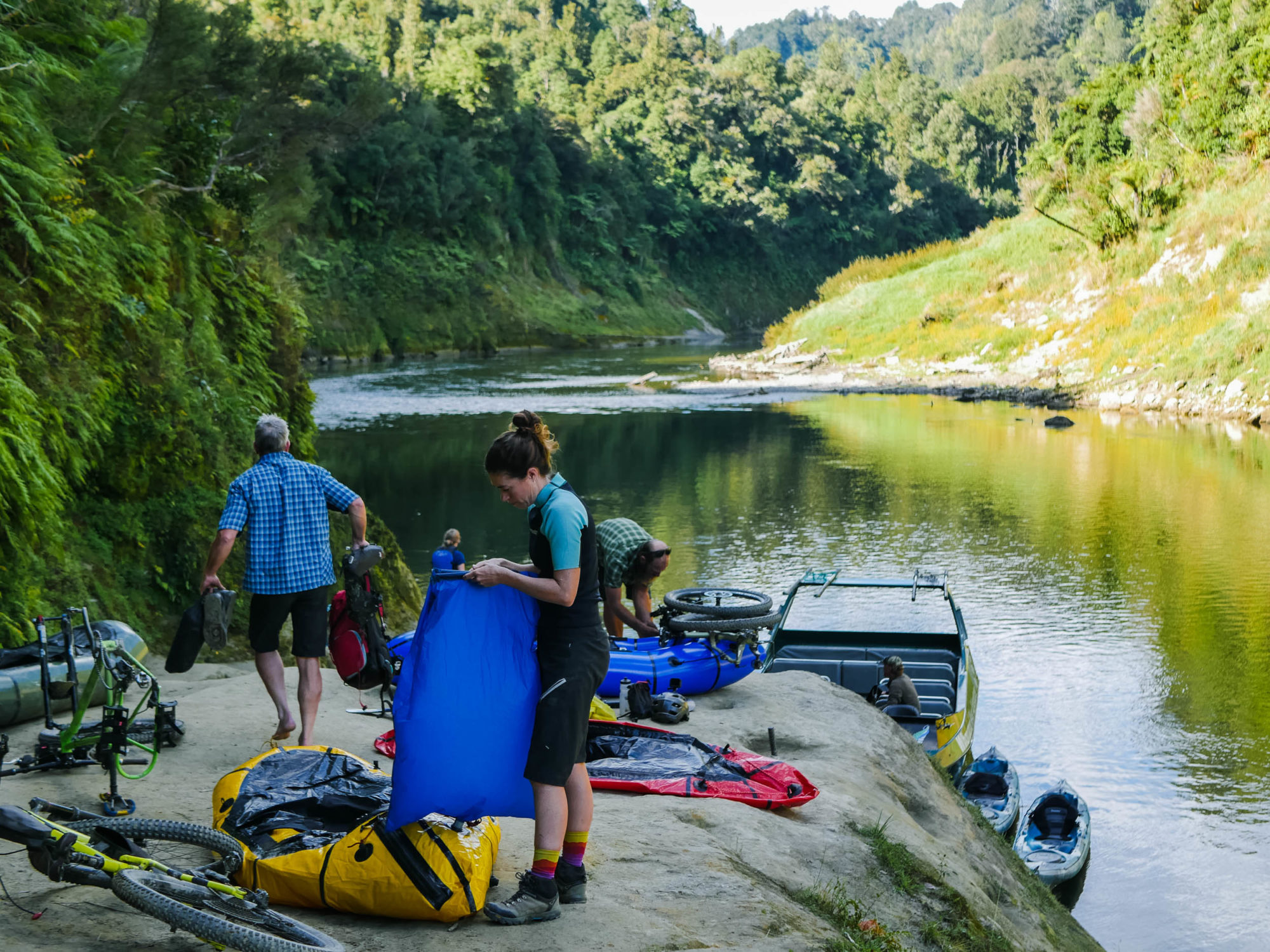
I interviewed Wayne and Joe the next morning and got a feel for the passion required to run a busy tourism operation with no electricity and the logistical challenges of requiring everything to travel by river. Wayne also put the fear of the Matemateonga Track in me when he warned me we’d struggle with the rugged terrain. I was prepared for 300 vertical metres of hike-a-bike in the first two kilometres, but the North Island humidity hit me and I struggled to find a rhythm before we topped out for a shady lunch with expansive views over the towering Mt. Ruapehu.
From here to our hut for the night was only 10 kilometres, but the going would be slow and filled with high-exposure sections where a fall could have been fatal. We rode some amazing sections and hiked a lot too. I was dehydrated and incredibly focused on the narrow track, ensuring a pedal strike wouldn’t lead to a free fall into the abyss.
We were all stoked to see the hut after a long and hot day through some of the most intimidating terrain I’ve ever come across. That night, glowing from overcoming the challenges of the day, I decided to get a drone shot of the tiny clearing of the hut surrounded by thick jungle. That was the last flight of the Mavic mini, as it was lost to the forest with a power issue. Due to the steep terrain and impregnable vegetation, it was pointless to try and recover it.
Day four shaped up to be another slow and technical affair. The track’s historical significance was becoming obvious too. The track followed the ridgeline continuously as this was the only way of traversing the terrain, and departing from the high point would have led into a steepening gradient until it became a vertical precipice. It was easy to imagine the Maori iwi moving along the ridge for trade and other purposes.
By now we were on a good rhythm of team travel, and the technical singletrack was awesome around the manky bits. The Matemateonga is a relatively little used track, even by hiking standards. The hut journals showed very few mountain bikers, which I found surprising. We had prime conditions and it would have been treacherous in the wet, but it was fantastic backcountry bikepacking for more advanced riders on full-suspension trail bikes. The DoC huts all had 10 bunks, were well kept, and had rainwater tanks and spacious common areas.
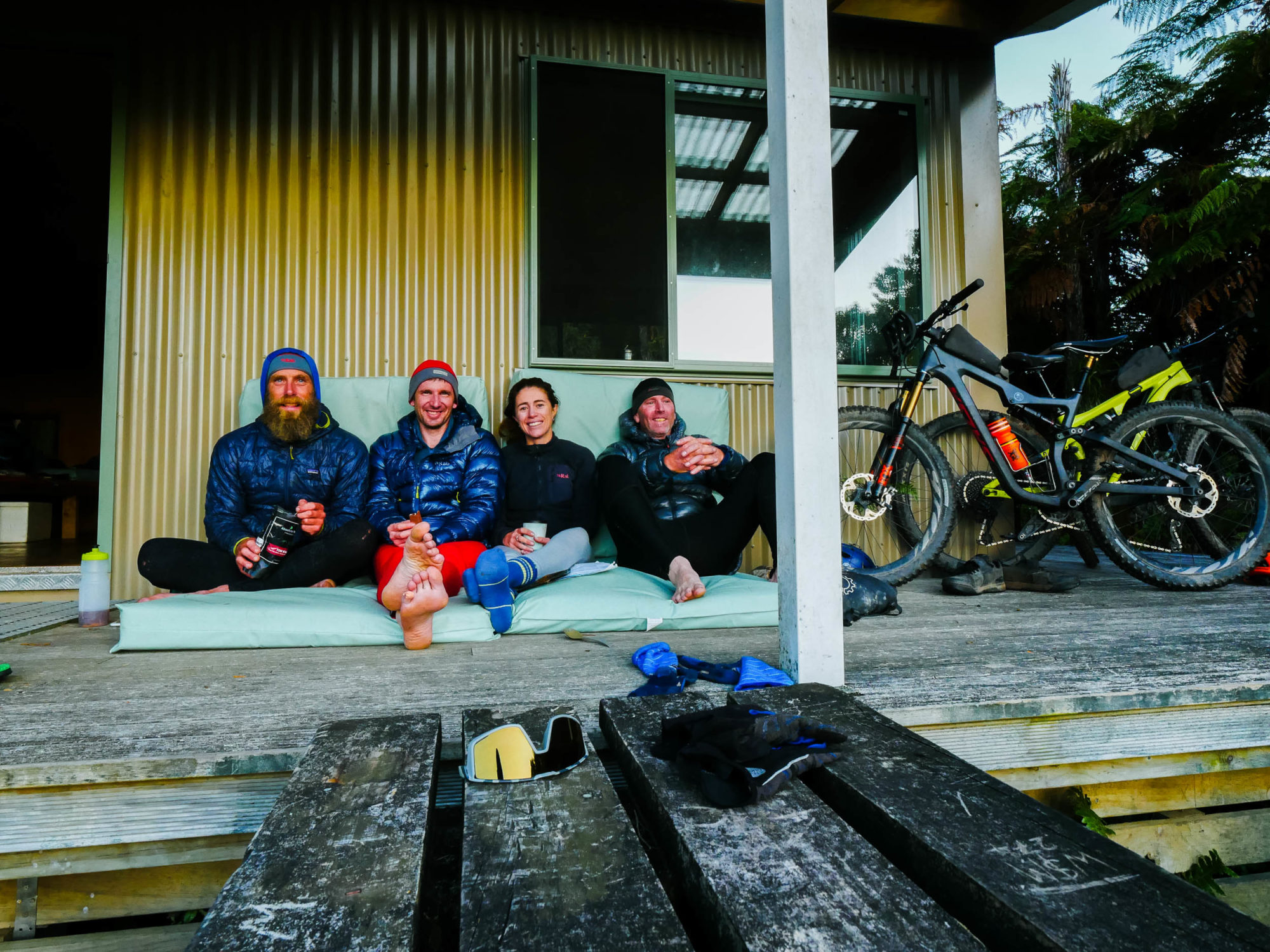
Our fifth day meant the finish of the Matemateonga and a change of scene. We came to the first gravel road on the trip and we coasted down into the steep farmland of the Aotuhia Station, another example of early settlers endeavouring to break in this tough land decades ago. They even built impressive tunnels to circumvent steep ridge lines on the ramshackle roads.
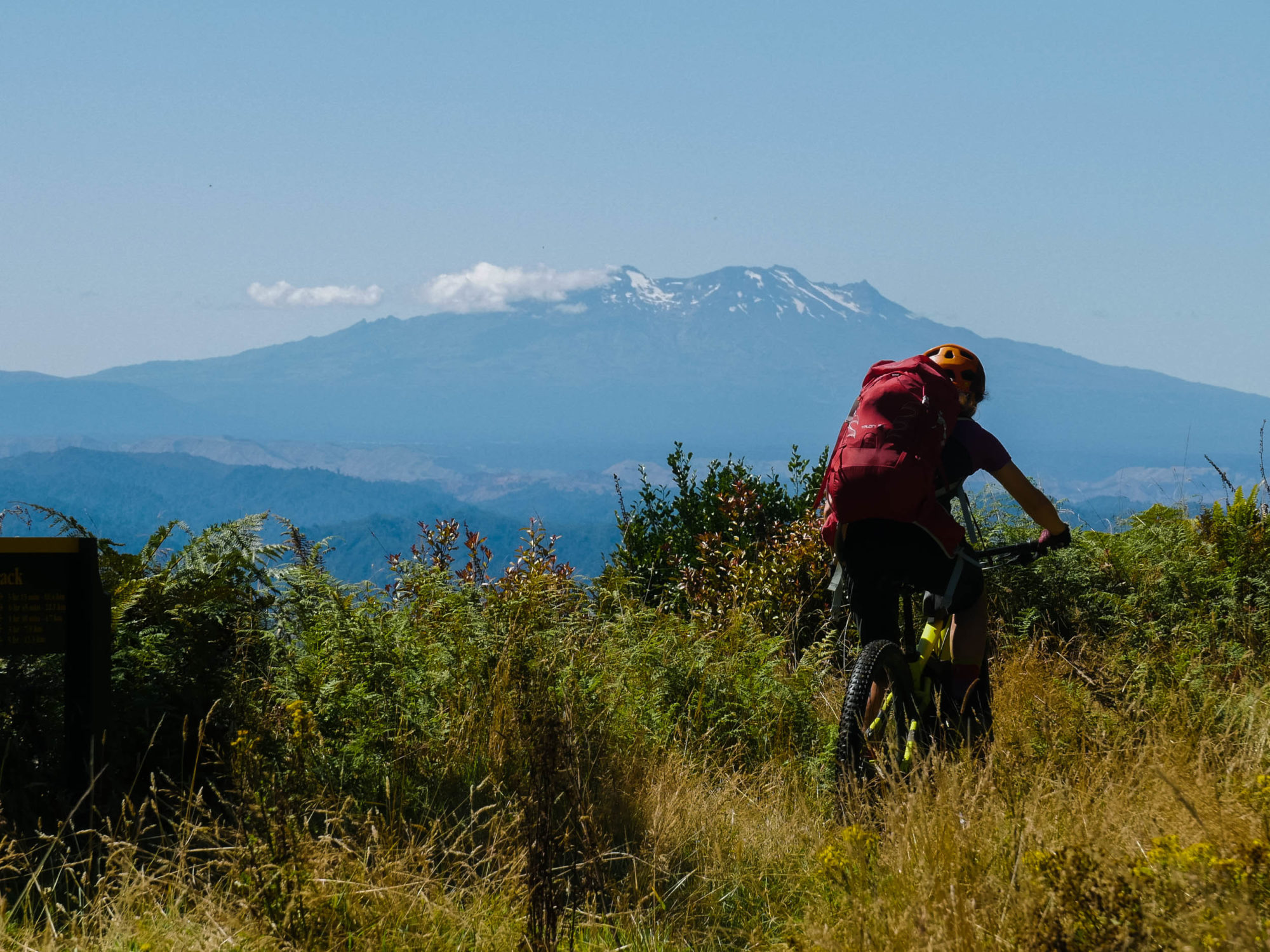
After a gradual climb for nearly 20 kilometers, we arrived at civilization. A town! Whangamomona and old coal and rail town along the now scarcely traveled road known as the Forgotten Highway, or State Highway 43, from Taumaranui to Stratford. We had booked into the pub for the night and when we checked in the nice publican walked us next door to the old post office done up period style into a motel room. Needless to say we made the shower filthy and set out to drink the pub dry, but in reality had two pints, a big burger and chips, and fell asleep before 9:00 PM.
Jackson and I had connected with the owner of a tourism outfitter, Forgotten World Adventures, that had developed a tour on the old disused railway using petrol driven golf carts on the tracks. Ian Balme has give us permission to strap our bikes to the buggys for the almost 50-kilometre ride to a spot somewhat close to our starting point that’d leave us a 30-kilometre gravel ride back to Taumaranui.
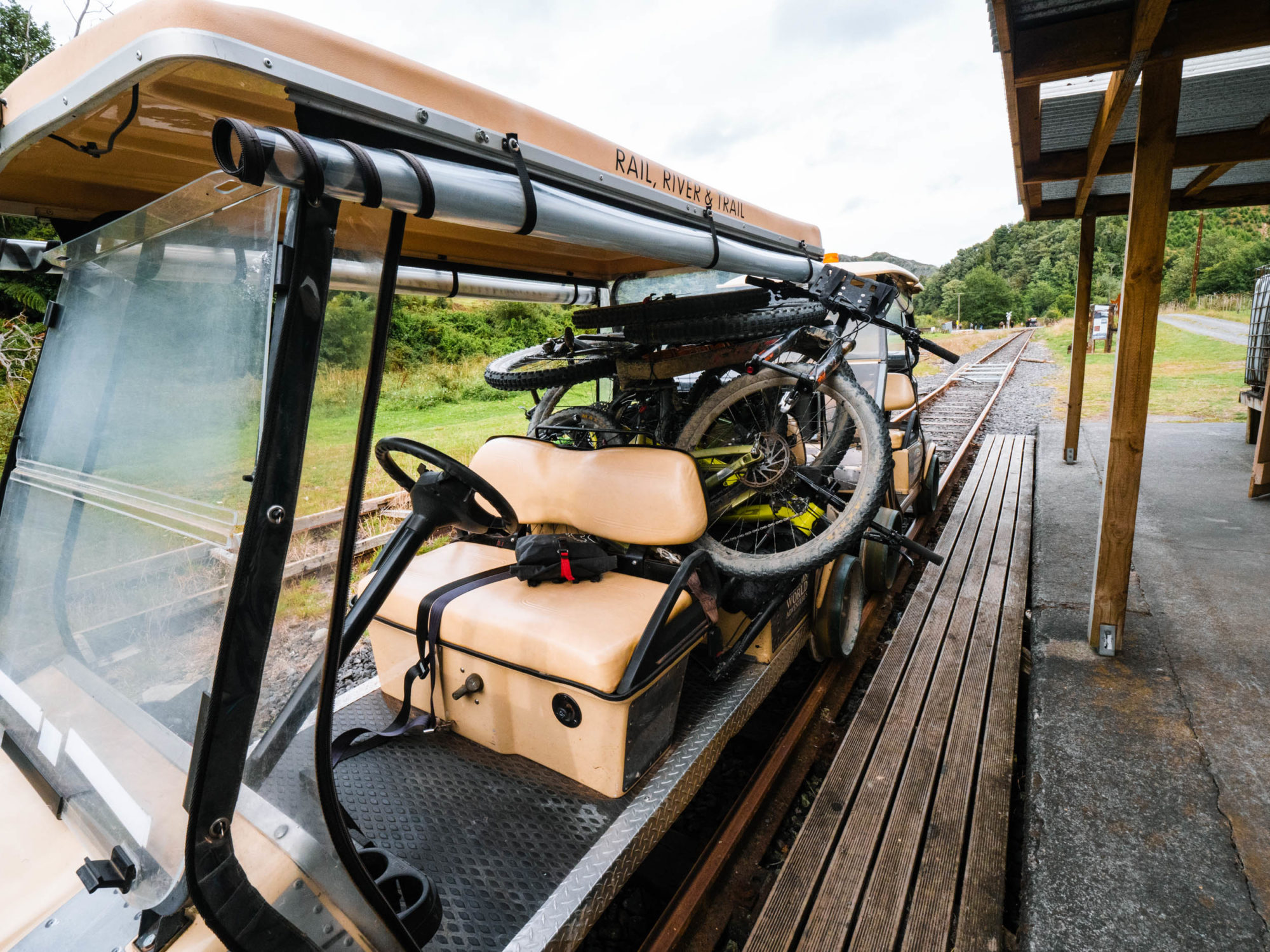
It was pretty comical jamming our bikes in the back of a four-person buggy, but we made it work and we set off with the commercial tour of the day. The railway was once busy moving coal and timber, which many hoped would bring prosperity to the remote areas. It failed to come to fruition and the railway fell into a state of decay before Ian’s business brought it back to life, offering a unique way of viewing the landscape.
The tour customers thought we were a bit crazy, but there were some nice old ducks and we natted away when we got the chance. They waved us off after we built our bikes up and headed for the finish line. It was a cruisy, undulating ride through sheep country. Temperatures were high and we had a 300-metre vertical climb to finish before the descent into town. It was brutal.
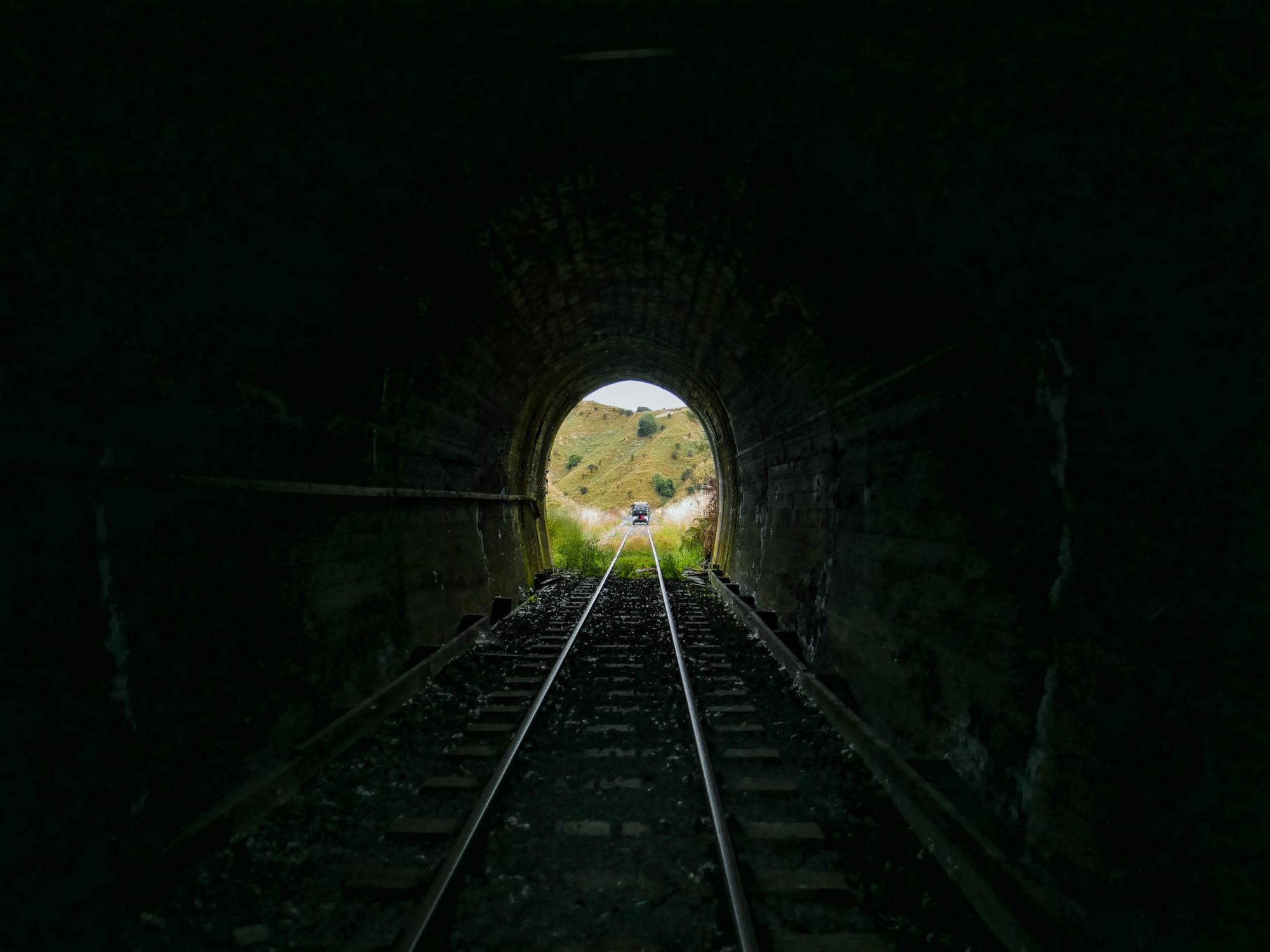
It seemed only fitting to call the film Forgotten Highways. We had traveled six old trails that had been highways at some point in history, be them for Maori or European settlers, all with similar enthusiasm for their endeavours as we were in the modern day to accomplish a challenge we set for ourselves. The toil we had endured whilst recreating would have been a drop in the bucket for what these men and women undertook to live off the land, and even to simply travel through the landscape without the high-tech bikes, boats, and equipment we had available to us.
Were they forgotten? That depends on definition, I reckon, maybe forgotten as ‘highways’, but this river and these trails are thick with heritage, folklore, legend, and endeavour. In retrospect, it seemed fitting to experience this area with a degree of toil and discomfort, giving us a properly immersive experience of the Whanganui District.

About Deane Parker
Deane Parker has always been drawn by the allure of the backcountry, and always will. For as long as he can remember he’s always been passionate about exploring new landscapes, what’s around that corner, over that ridge, or in that canyon. Backcountry bikepacking, bikerafting, and packrafting are the pursuits he’s been most drawn to, through the evolution of being an adventurous kiwi born and bred in Aotearoa, Land of the Long White Cloud, New Zealand—an Adventurer’s nirvana.
Please keep the conversation civil, constructive, and inclusive, or your comment will be removed.






